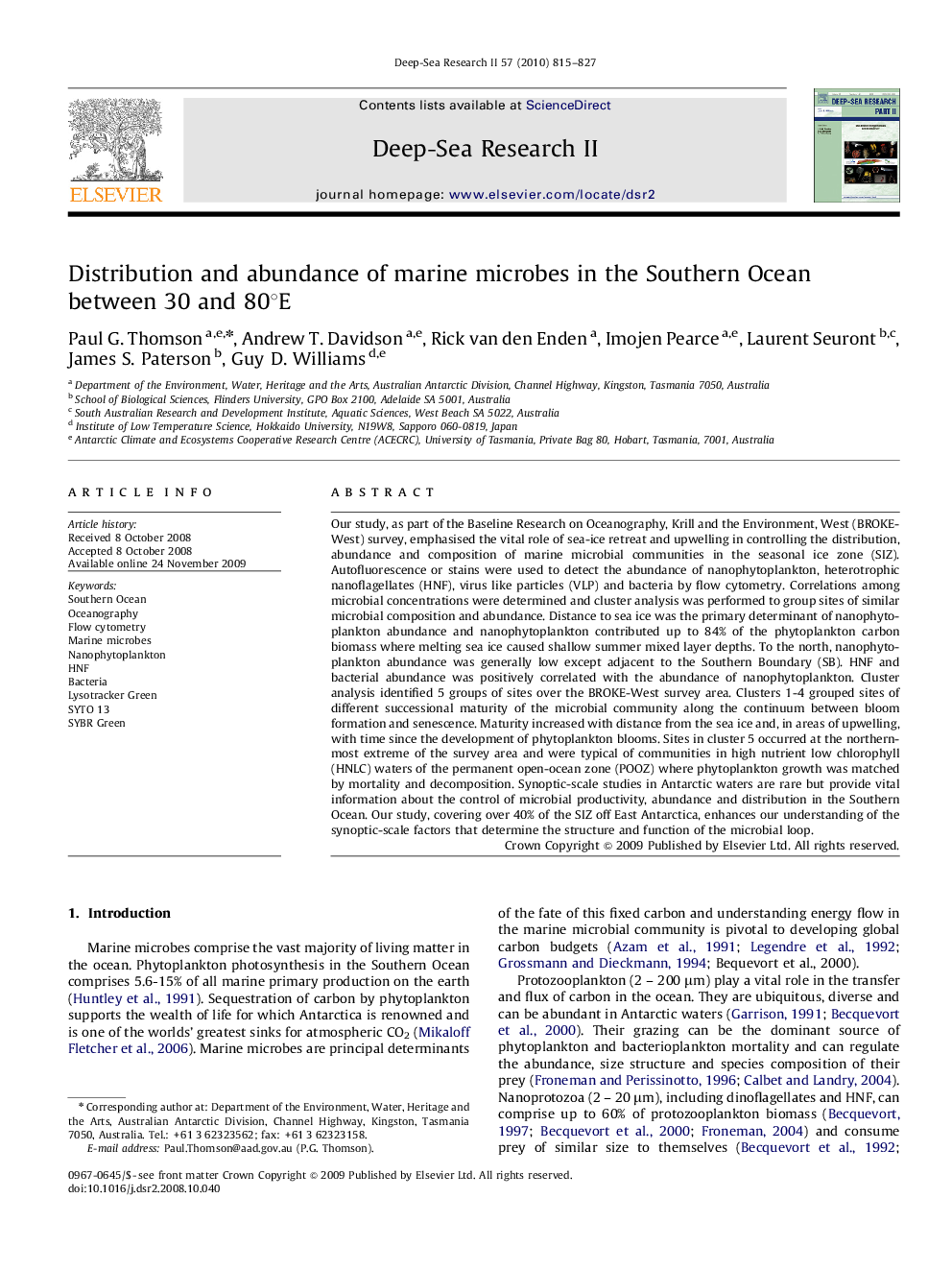| Article ID | Journal | Published Year | Pages | File Type |
|---|---|---|---|---|
| 4537185 | Deep Sea Research Part II: Topical Studies in Oceanography | 2010 | 13 Pages |
Our study, as part of the Baseline Research on Oceanography, Krill and the Environment, West (BROKE-West) survey, emphasised the vital role of sea-ice retreat and upwelling in controlling the distribution, abundance and composition of marine microbial communities in the seasonal ice zone (SIZ). Autofluorescence or stains were used to detect the abundance of nanophytoplankton, heterotrophic nanoflagellates (HNF), virus like particles (VLP) and bacteria by flow cytometry. Correlations among microbial concentrations were determined and cluster analysis was performed to group sites of similar microbial composition and abundance. Distance to sea ice was the primary determinant of nanophytoplankton abundance and nanophytoplankton contributed up to 84% of the phytoplankton carbon biomass where melting sea ice caused shallow summer mixed layer depths. To the north, nanophytoplankton abundance was generally low except adjacent to the Southern Boundary (SB). HNF and bacterial abundance was positively correlated with the abundance of nanophytoplankton. Cluster analysis identified 5 groups of sites over the BROKE-West survey area. Clusters 1-4 grouped sites of different successional maturity of the microbial community along the continuum between bloom formation and senescence. Maturity increased with distance from the sea ice and, in areas of upwelling, with time since the development of phytoplankton blooms. Sites in cluster 5 occurred at the northernmost extreme of the survey area and were typical of communities in high nutrient low chlorophyll (HNLC) waters of the permanent open-ocean zone (POOZ) where phytoplankton growth was matched by mortality and decomposition. Synoptic-scale studies in Antarctic waters are rare but provide vital information about the control of microbial productivity, abundance and distribution in the Southern Ocean. Our study, covering over 40% of the SIZ off East Antarctica, enhances our understanding of the synoptic-scale factors that determine the structure and function of the microbial loop.
